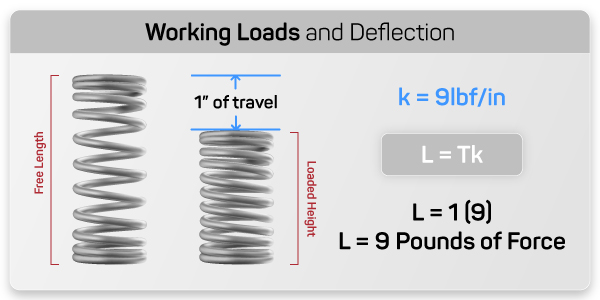The function of Spring :-
Different types of springs and applications :-
1.compression spring :- designed to operate with a compressive load and found in shock absorbers, spring mattresses, mechanical pencils, and retractable pens.
2.extension spring :- designed to operate with a tensile load. An archetypical example is a Slinky, but these are also found in luggage scales and garage door mechanisms.
3.torsion spring :- designed to operate with torque (twisting force); powers every clothespin and mouse trap.
4.constant force spring :- Self-explanatory by its name, a constant force spring requires nearly the same force, no matter how long the extension. Constant force springs are also called clock springs. This type of spring is usually a coiled ribbon of spring steel used in counterbalancing applications, such as height adjustment for monitor.
Formulas for compression spring design :-
Solid Height = Wire Diameter x (Total Coils + 1)
Lsolid = d(N+1)
Lsolid = d(N+1)
Inner Diameter = Outer Diameter – 2 (Wire Diameter)
D inner = D outer – 2d
Outer Diameter = Inner Diameter + 2 (Wire Diameter)
D outer = D inner + 2d
Mean Diameter = Outer Diameter – Wire Diameter
D = D outer – d
D inner = D outer – 2d
Outer Diameter = Inner Diameter + 2 (Wire Diameter)
D outer = D inner + 2d
Mean Diameter = Outer Diameter – Wire Diameter
D = D outer – d
Index = Mean Diameter ÷ Wire Diameter
I = D ÷ d
I = D ÷ d
Coil Wire Length = Mean Diameter x Pi
cL = Dπ
Total Wire Length = Coil Wire Length x Total Coils
tL = cL x N
cL = Dπ
Total Wire Length = Coil Wire Length x Total Coils
tL = cL x N
Travel = Load ÷ Rate
T = L ÷ k
Load = Travel x Rate
L= Tk









data. It is a factual and beneficial article for us.Constant force spring mechanism Thankful to you for sharing an article like this.
ReplyDelete